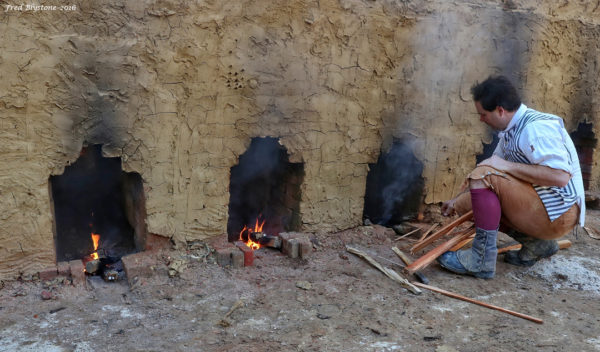
Minutes from now our Brickmakers will put the year’s work to the torch, firing about 24,000 bricks in a kiln they built over the course of the last month. In the next few days, the heat will rise to about 2,000 degrees, and by Saturday night the giant oven’s metal doors will glow an eerie reddish-purple and, with smoke billowing from the top, the temporary edifice will begin to hum like an engine.
The annual rite provides one of Williamsburg’s most transcendent sights, and ticket and pass holders are invited to witness it from now through Sunday, Nov. 20, from 9 a.m. to 10 p.m. Sunday the Brickyard will close as early as 5 p.m., depending on whether the firing is done.
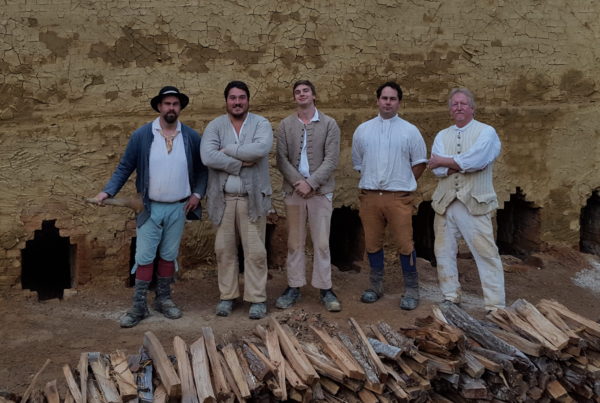
Our fearless team of Brickmakers (practicing their game faces, above) has stocked up on beef jerky, popcorn, and other snacks because they’ll be tending the site round-the-clock until their task is complete. Below, Josh practices warming his hands where they’ll have a fire set up to keep warm (yes, as if there weren’t a 2,000-degree inferno twenty feet away).
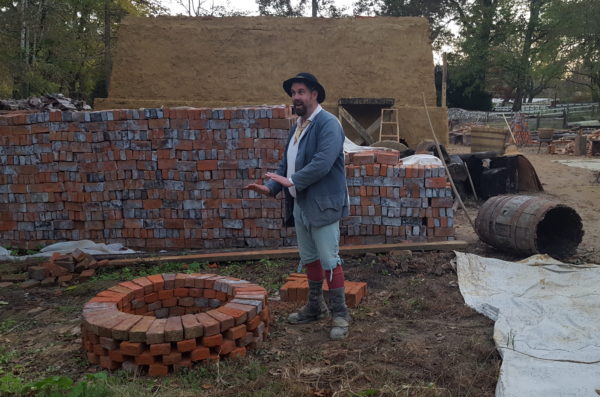
Our Brickmakers are experts in this process that dates back thousands of years. This year, they turned about 120 tons of clay into bricks. Thousands of guests helped stomp the mushy clay-and-water mixture near the entrance to the Brickyard, working out sticks, rocks, and other debris. After using a mold to shape the bricks, they sat out to dry for a few days before being stacked in the open shed.
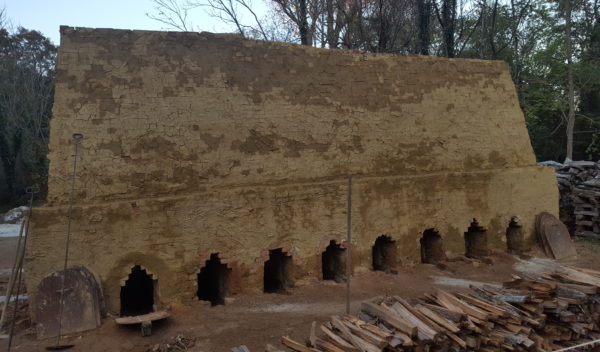
Now, with the end of stomping season, it’s time to fire the clay parallelepipeds into the final product. The clamp, unlike a more permanent kiln, is essentially made up of the bricks to be baked. They are stacked about a finger’s length apart, then topped off with a layer of previously fired bricks with no space between them. The whole structure is covered in a fresh layer of clay, stretched with some sand. It’s like the daub part of a wattle and daub house.
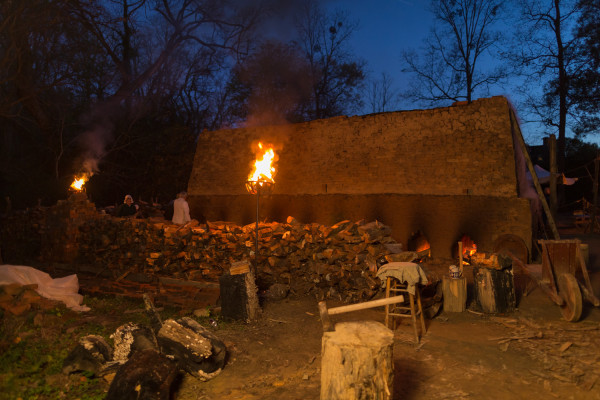
This type of kiln is called a “clamp,” a temporary structure that acts as a giant oven to cook the bricks. This year’s is just a tad smaller than last year’s (our biggest ever), measuring about 25 feet long, 12 feet high, and 15 feet deep.

Eight channels run underneath the clamp, like separate little fireplaces at its base. Twenty-plus cords of wood sit at the ready. At the beginning, the Brickmakers will use kindling-size wood to warm up the oven, but they can’t let it get hot too quickly. The first hours of the firing are meant to steam the moisture out of the bricks. They’ll know it’s too hot if the bricks start to pop, meaning bricks are starting to burst. It happens every now and then. A small percentage of the bricks will crack too much to be useful.
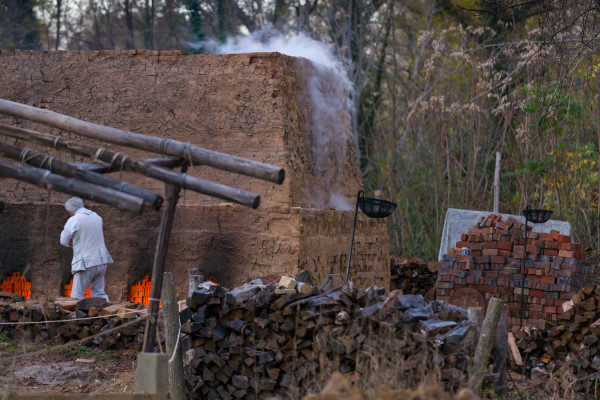
Sometime Friday, once the steam coming out of the top has turned to smoke, the Brickmakers will crank the temperature up by feeding a steady supply of wood into the tunnel openings.
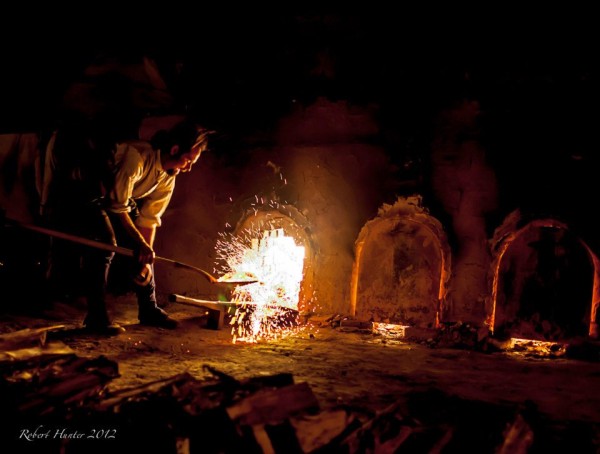
The Brickmakers will be working alternating 12-hour shifts until the bricks are fully baked, checking and feeding the fire all night. It’s a unique atmosphere, especially near dusk, with light from the oven and scattered cressets disappearing into the darkness, and the smell of smoke mingled with warming clay. The engine sound comes from the air being drawn through the spaces between the bricks.
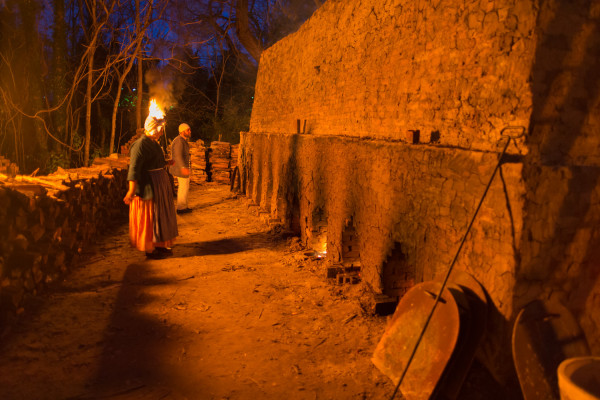
Late Sunday the fire will be allowed to die down, and the kiln will slowly cool over the course of the next week or so. Eventually the clamp will be dismantled. Most of the bricks will be used for ongoing restoration projects across the Historic Area.

But this year, several hundred were imprinted “CW 2016” and will be sold at Prentis Store. Not exactly an 18th-century feature, but a nice souvenir. Or a really big stocking stuffer. The marked bricks are a first-time experiment, so we’re hoping they turn out well after the firing.
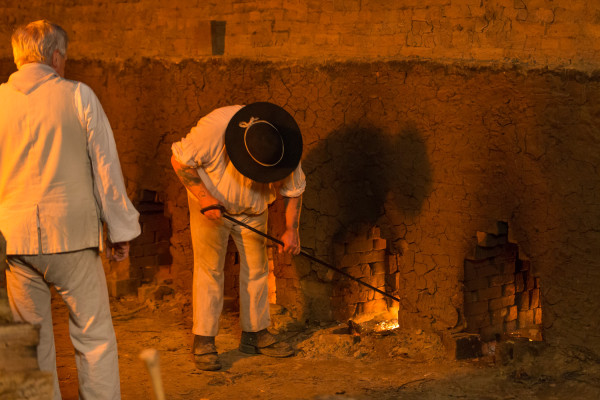
Learn more about the Brickmakers in this podcast. And follow the Brickyard and all our Historic Trades on Facebook, where you’ll find many more pictures and descriptions of what they’ve been up to all year long.
Nice article and great pictures, Bill.
Thank you!
Very interesting! I feel like I’m watching Ruth Gledhill, Peter Ginn, and Alex Langlands - only colonial US style.
What a great thing for a “stocking stuffer.” Sorry to miss seeing all of this, but hope to see it next year.
Stocking stuffer of a marked brick would sure be nicer than a lump of coal.